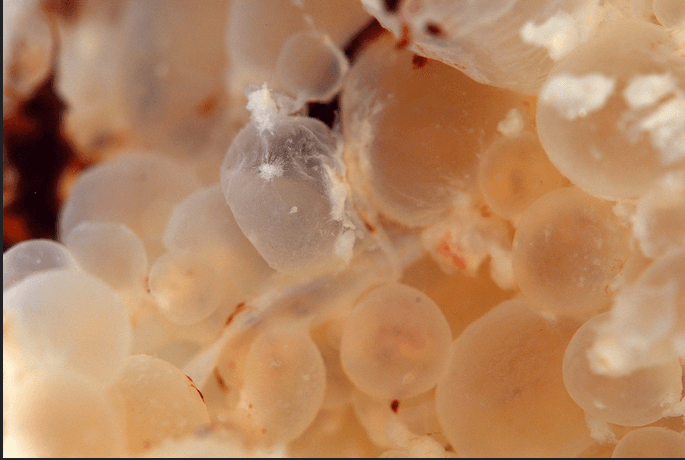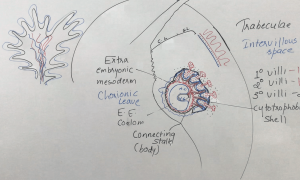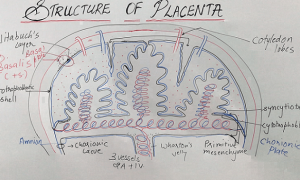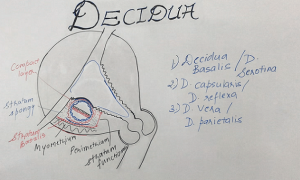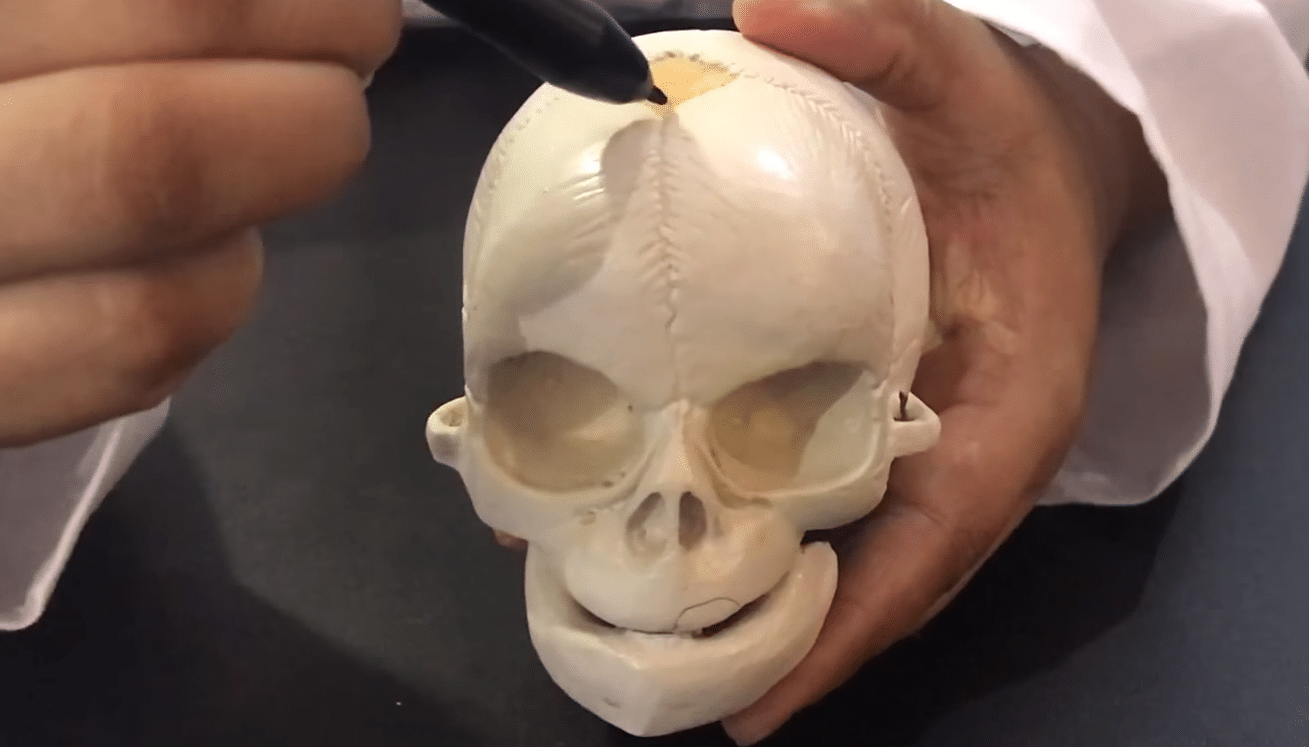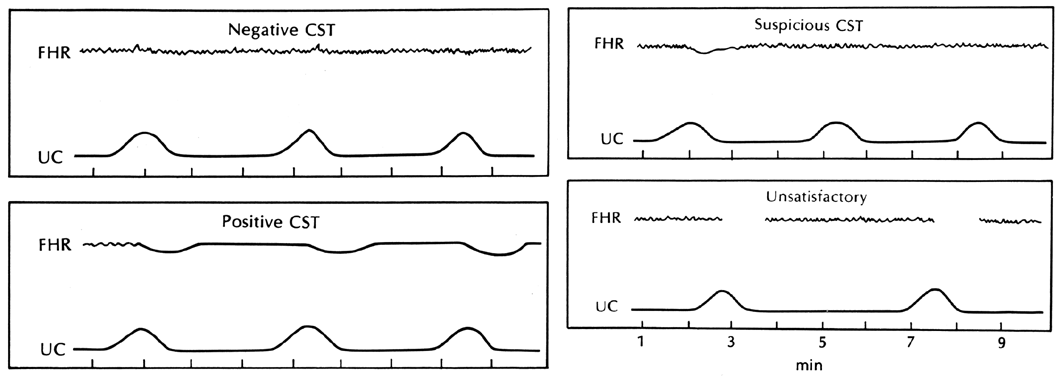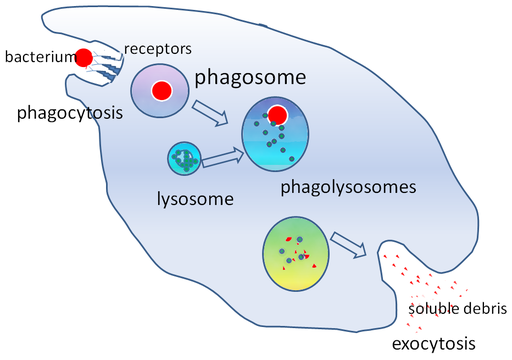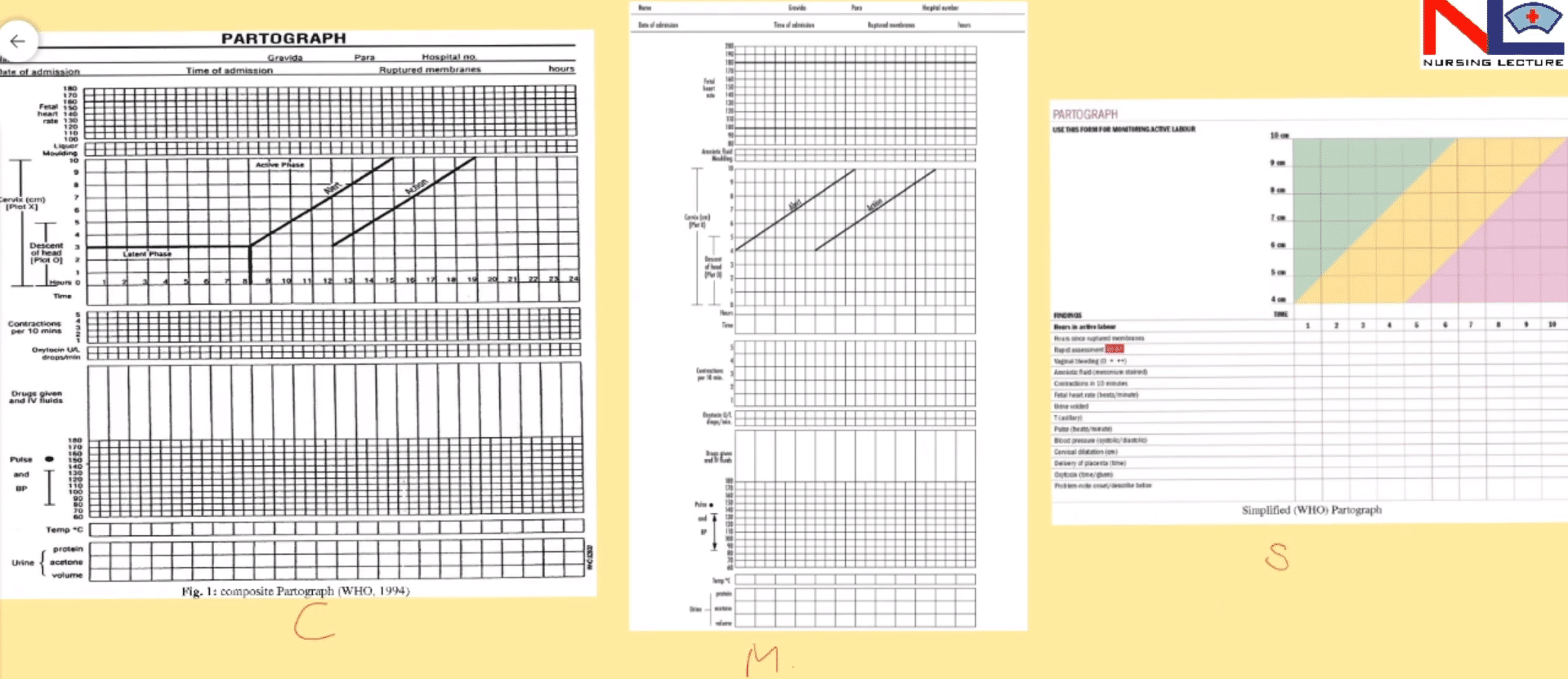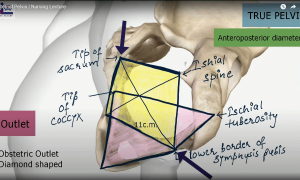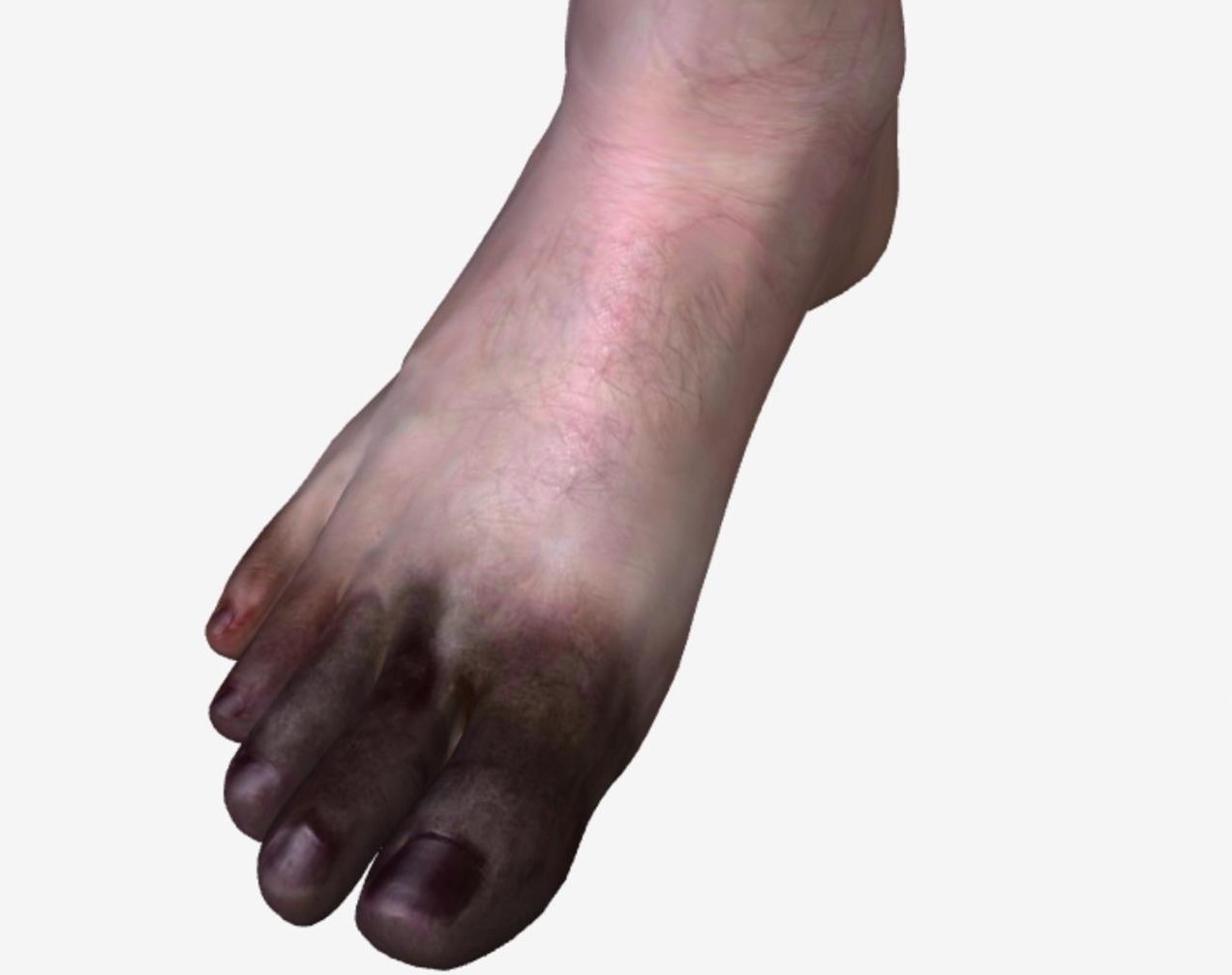‘Hydatidiform’ means a drop of water & a mole mean shapeless masses. It is defined as abnormal placenta characterize by –
- Enlarged, oedematous, chorionic villi which become vesicular
- Trophoblastic proliferations
It may be non-invasive or invasive 2 forms are in non-invasive type-
- Complete (classic mole)- it is derived from the father (androgenesis) has a chromosomal pattern of 46XX.
- Partial mole is mostly triploid 69XXY.
(1.) Non-invasive Mole-
-Clinically condition appears in the 4-5 months of gestation, characterized by increased in uterine size, vaginal bleeding & history of the passage of grape-like masses per vaginam.
-Serial determination of β-hCG is elevated more in blood & urine as compared with the level in normal pregnancy.
-Pathological find in noninvasive & in invasive is different.
(a) Classic mole-
Grossly- it is enlarged, filled with grape-like vesicles up to 3 cm in diameter & vesicles contain clear water fluid.
Microscopically- large, round, oedematous villi with decreased vascularity, Trophoblastic proliferation in the form of masses.
(b) Partial Mole-
Grossly- the uterus is smaller than expected, but part of the placenta appears normal and the fetus is having multiple malformations.
Microscopically- some of the villi show oedematous change while others are normal. Trophoblastic proliferation is usually slight.
(2.) Invasive Mole-
Grossly- invasive mole shows the invasion of tissues into the uterine wall which causes hemorrhage.
Microscopically- usually lesion is benign & identical to classic mole, there is an elevated β hCG level.

